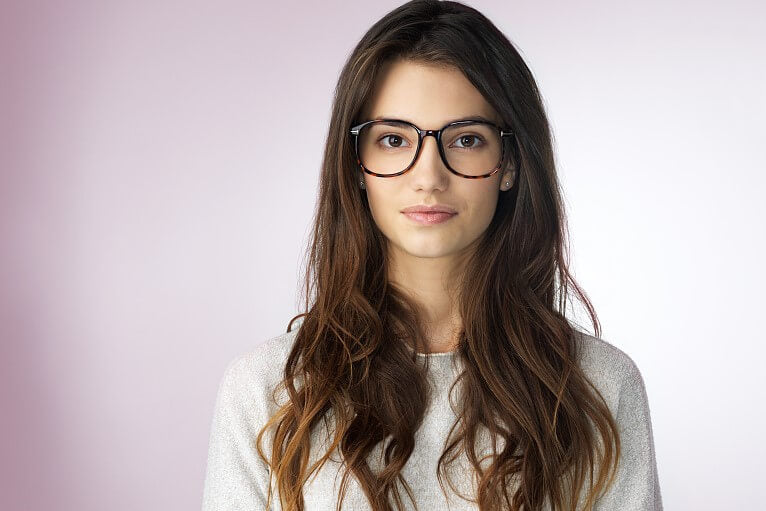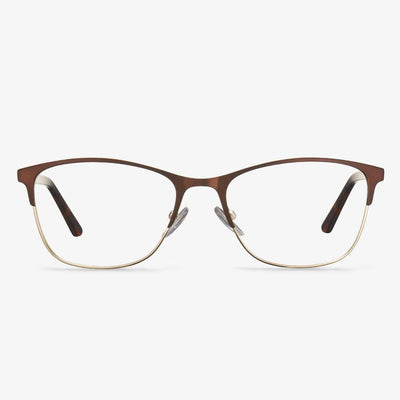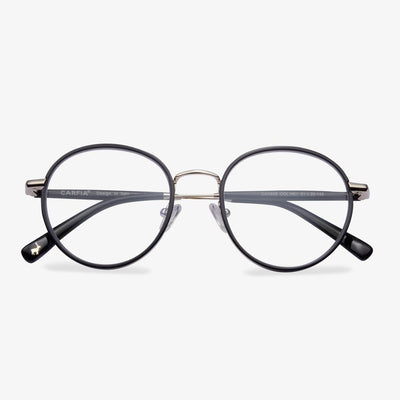The lenses of prescription glasses
Common materials for lenses include glass, resin, and PC. The glass is fragile and heavy, and few people wear it anymore. PC film is tough and not fragile, but it is not resistant to high temperature and the surface is easily scratched. The most common type of lens on the market today is the resin lens, which is light in weight, hard to break, and reasonable in price. At present, it is generally recommended that you choose resin sheets, and it is recommended that people with ultra-high myopia choose glass sheets.
Generally, lenses can be divided into spherical and aspherical surfaces according to different curvature designs. When choosing, refer to the degree of the eye. For people with lower degrees, There are fewer differences between the two shapes. For people with moderate to high myopia, aspherical lenses will have better imaging effects and clearer vision.
When choosing a lens, a parameter that is often mentioned is the refractive index. Common refractive indexes are 1.56, 1.60, 1.67, and 1.74. With the same degree, the higher the refractive index, the thinner the lens.
What progressive spectacle lenses are best?
Essilor is a brand, and it designs, manufactures, and markets a wide range of lens products to help people correct and protect their vision. Essilor adheres to the corporate mission of 'improving vision, improving life', invests 200 million euros in research and development every year, and constantly launches new products to enhance consumers' experience in wearing glasses. Continuous innovation has always been the core gene of Essilor. In 1959, Essilor created the resin lens, and in the same year, it invented the world's first progressive lens. Innovation involves technology, manufacturing, sales, and service. Based on innovation, they can make as many people as possible obtain visual health, and this is the driving force to promote their development.
What should drivers notice when wearing polarized glasses?
Many drivers like to wear polarized lenses. Indeed, the polarized lens can reduce strong light, eliminate glare, so that the line of sight is natural and soft, but the polarized lens is more suitable for fishing, skiing, and other large areas of the reflective environment. Drivers sometimes have to face the tunnel and another dark scene, the polarized lens is easy to make people suddenly feel dark at the moment. In addition, polarized lenses can make LCD screens and LED traffic lights dim. Therefore, when choosing polarizers, it is best to choose good quality optics, and when going through the tunnel, it is best to take off your glasses ahead of time and blink a lot. Before wearing the driver polarizing lens, try it on and observe whether the polarizing film of the lens is smooth. If the polarizing film is uneven, there will be inflow in the imaging, which may lead to visual fatigue and migraine.
Square face with round glasses
The square face belongs to the type of facial lines or tough, which looks a bit unnatural. For this type of face, it is best to choose round glasses because a round shape can make your facial lines softer and add a little femininity. The most suitable glasses for a square face are round, but the size of this round is also very particular. If you have a wider face, it is better to choose larger glasses, which can better modify the face and make the face smaller.
Semi-Rimless Frame Glasses
Half-rim spectacle frames replace part of the spectacle frames with nylon wire, giving people the feeling of bottomless frames. It is lighter and looks more chic and firm. If you are a highly myopic friend, choose a pair of half-rim glasses, which can not only reduce the load on the bridge of your nose but also look more fashionable. Half-rim glasses are the first choice for men in the workplace, and they are more mature and stable.
There are three processes for resin-changing lenses.
The incorporation method, known as bulk polymerization, is similar to the method of glass lens, that is, one or more photochromic dyes are directly incorporated into the polymer monomer of the substrate for bulk polymerization, and the lens formed after curing will change color. Discoloration dye is completely integrated into the resin lens substrate, so the lens made of color persistence is very good.
The uniformity of discoloration and the depth of color after discoloration are highly related to the thickness of the lens. Because the thickness of the lenses at all levels is different, there will be a color difference between the depth of discoloration and the uniformity, and the uneven phenomenon of high brightness is more obvious.
The film type is known as the coating method. It is the chromatic resin lens by coating or dipping in a layer of chromatic dye on the base of the resin lens. Because the coating covers the surface of the lens, the color uniformity is good. The coating, which is only about 0.05mm thick, does not provide enough molecules to make the lens dark enough, so the color is relatively less dark, and the discoloration lasts slightly longer.
Infiltration, known as the penetration method, is to use the principle of penetration, through the thermal diffusion method to make the color dye permeate the surface of the resin lens sheet material, with diffusion depth up to 0.15~0.20mm. The lens has a constant color change characteristic. There will be no inconsistency between the center and the surrounding color as the luminosity gets darker. The color-changing resin lens made by infiltration type has the benefits of uniform color-changing, small color difference, fast and thorough color-fading, which is the mainstream of color-changing technology at present.
Choose rectangular glasses based on the shape of your face.
If you belong to the oval face, do not choose the too large or angular glasses frame. And do not choose long or square ones. It will be easy to elongate the face and affect the overall appearance. The shape of a round face is the opposite of a square face, so the buying principle of the glasses is basically the opposite of a square face. You need a more angular one to improve the shape of the face, but you need a square face (elongate) principle, that is, use a lower height, higher temple position of the frame.











































